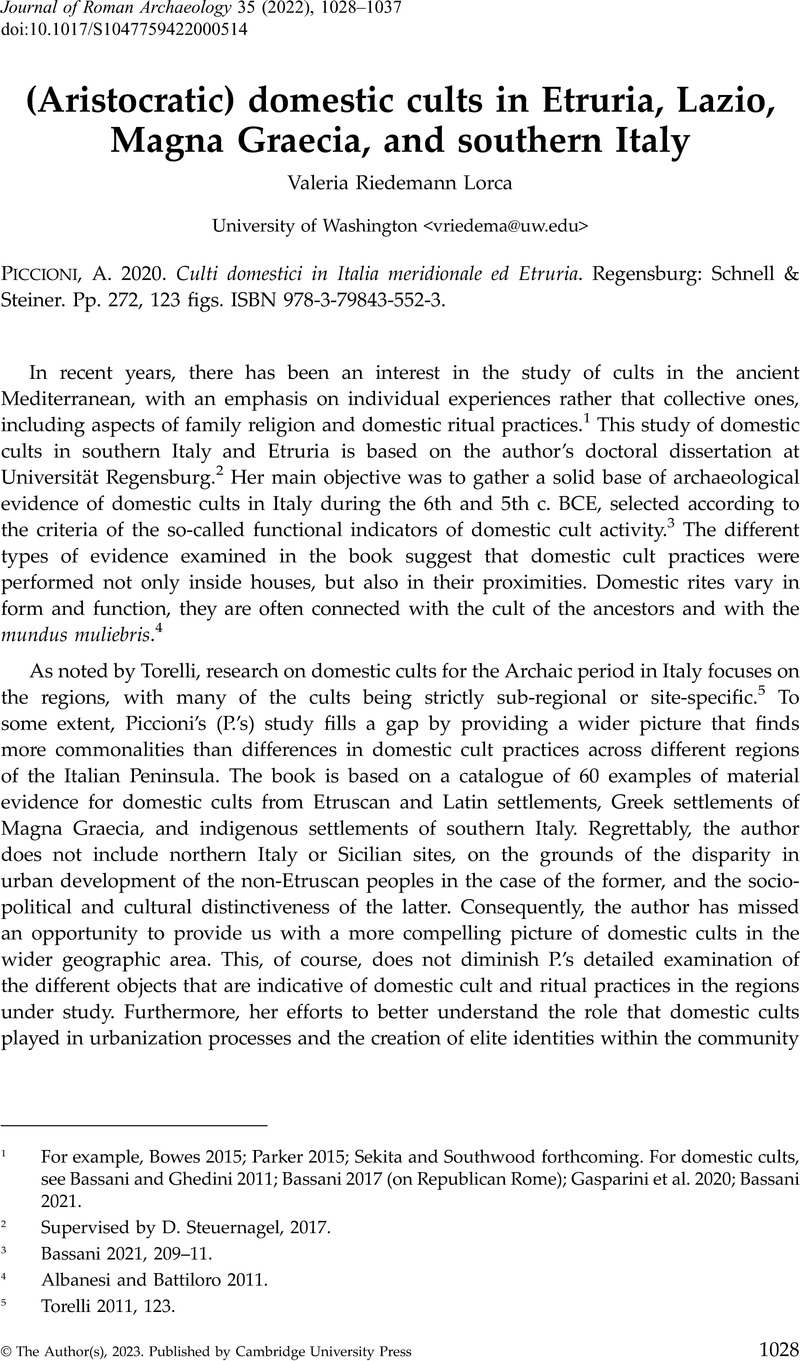No CrossRef data available.
Article contents
(Aristocratic) domestic cults in Etruria, Lazio, Magna Graecia, and southern Italy - A. Piccioni 2020. Culti domestici in Italia meridionale ed Etruria. Regensburg: Schnell & Steiner. Pp. 272, 123 figs. ISBN 978-3-79843-552-3.
Review products
Published online by Cambridge University Press: 20 January 2023
Abstract

- Type
- Book Review
- Information
- Copyright
- Copyright © The Author(s), 2023. Published by Cambridge University Press


